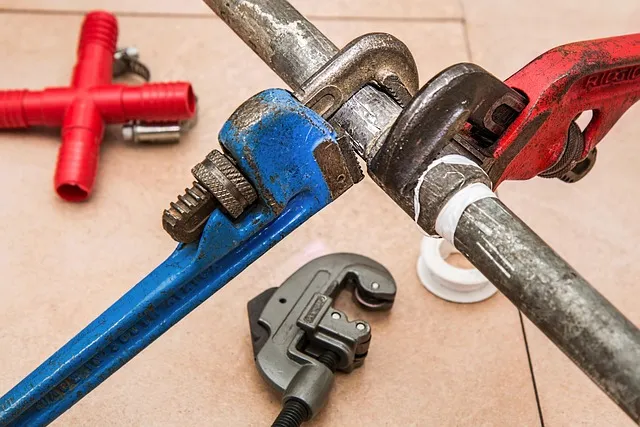Residential foundation repair is crucial for home safety and stability, addressing structural issues caused by soil settlement, faulty construction, or moisture intrusion. Signs like cracks, uneven flooring, or misalignments require prompt inspection to identify root causes. Techniques such as underpinning, piering, or replacing affected sections stabilize and level the foundation. Regular comprehensive structural inspections detect early signs of damage, preserving home integrity and property value. Advanced technologies enhance repair accuracy, while timely intervention prevents costly repairs and structural collapse. Homeowners should regularly inspect for cracks, settlement, and water damage to maintain their foundation's health.
A comprehensive structural inspection is crucial for maintaining the integrity of your home, especially regarding residential foundation repair. This in-depth analysis goes beyond visual inspections, utilizing advanced technology to uncover potential issues. Understanding the basics of foundation repair and the key components of a structural report is essential for homeowners. By identifying common problems early, you can prevent costly repairs. This article guides you through the process, offering insights on advanced inspection methods, signs requiring professional intervention, and maintenance tips for long-lasting residential foundations.
Understanding Residential Foundation Repair: The Basics

Residential foundation repair is a crucial aspect of maintaining a safe and stable home. It involves assessing and addressing structural issues that affect the base of a residence, which bears the brunt of external elements and supports the entire structure. These repairs can range from minor cracks to more significant structural adjustments, all aimed at ensuring the longevity and integrity of the property.
The basics of residential foundation repair include identifying signs of damage, such as cracks in walls or floors, uneven flooring, or visible misalignments. Once these issues are detected, a comprehensive inspection is conducted to determine the root cause, which could be soil settlement, faulty construction, or moisture intrusion. Following the inspection, specialized techniques and materials are employed for repair, including underpinning, piering, or replacing affected sections to stabilize and level the foundation.
Importance of Comprehensive Structural Inspection for Homes

Comprehensive structural inspections are an essential part of home maintenance, offering a detailed look at a property’s integrity and stability. These inspections go beyond surface-level checks, delving into the foundational elements that keep your home standing strong. By examining the structural components, including the foundation, walls, floors, and roof, professionals can identify potential issues like cracks, misalignments, or signs of water damage, which might indicate more serious problems beneath the surface. Early detection is key in preventing costly repairs and ensuring the safety and longevity of your home.
Regular comprehensive inspections are especially vital for older homes or those built on unstable soil. They help pinpoint areas requiring residential foundation repair, such as underpinning, piering, or replacement, before these issues escalate. This proactive approach not only preserves the structural integrity but also maintains the value of your property, providing peace of mind for current and future homeowners.
Key Components of a Structural Inspection Report

A comprehensive structural inspection report is an invaluable tool for homeowners, offering a detailed glimpse into their property’s integrity. These reports are especially crucial when it comes to identifying potential issues with residential foundation repair. Key components of such a report include a thorough evaluation of the structure’s fundamental elements: the walls, floors, roof, and, most importantly, the foundation itself.
Inspectors should meticulously assess the condition of these elements, documenting any signs of damage, settlement, cracks, or deformations. In the case of residential foundation repair, the report should provide a clear diagnosis of the problem, whether it’s due to poor initial construction, shifting soil conditions, or age-related deterioration. Additionally, it must offer recommendations for necessary repairs and maintenance, ensuring the property’s long-term stability and structural safety.
Common Issues Found in Residential Foundations

Residential foundations are a crucial component of any home’s structural integrity, yet they often go unnoticed until issues arise. Common problems found in residential foundations include cracks, unevenness, and settlement. Cracks in the foundation walls or floor can be caused by a variety of factors such as poor initial construction, soil movement, or changes in hydration levels in the concrete. These cracks not only affect the aesthetics of the home but can also indicate more serious structural damage. Uneven floors or walls are another frequent issue, often resulting from settling or shifting of the foundation due to changes in soil conditions or underground water activity.
While some minor issues may be addressed through routine maintenance and minor repairs, more significant problems may require professional intervention. Residential foundation repair services offer a range of solutions tailored to specific issues, including underpinning, piering, or replacement of damaged sections. Early detection of these common problems is key in preventing further damage and ensuring the longevity of a home’s structure.
Advanced Technology in Modern Foundation Inspections

In today’s digital era, advanced technology plays a pivotal role in enhancing the accuracy and efficiency of residential foundation repair. One such game-changer is the use of drones for aerial inspections. These unmanned aerial vehicles (UAVs) equipped with high-resolution cameras can capture detailed images of hard-to-reach areas, enabling professionals to assess structural integrity from unique perspectives. By analyzing these visuals, experts can identify even the most subtle signs of damage or settling, ensuring a comprehensive evaluation.
Additionally, ground-penetrating radar (GPR) technology has revolutionized foundation inspections. GPR uses radio waves to create detailed images of underground structures, providing non-invasive insights into the depth and integrity of foundations. This is particularly beneficial for older homes where visual inspections might not reveal the true extent of potential issues. Combining these cutting-edge technologies with traditional methods ensures a thorough inspection process, facilitating informed decisions for effective residential foundation repair.
When to Consider Professional Foundation Repair Services

If you’re a homeowner, noticing even the slightest signs of trouble with your foundation can be unsettling. While some issues may be easily addressed through DIY methods or minor repairs, there are times when professional residential foundation repair services are essential for maintaining the structural integrity and longevity of your home. Cracks in the foundation walls, uneven floors, sticking doors or windows, and visible gaps around doors and windows are all red flags that should not be ignored. These symptoms could indicate more serious problems, such as settlement, heave, or bowing, which require expert intervention.
Professional foundation repair specialists have the expertise, advanced tools, and specialized techniques to diagnose complex issues accurately. They can provide tailored solutions like underpinning, piering, or wall anchor systems to stabilize and strengthen your home’s foundation. Early detection and professional remediation are key to preventing further damage, costly repairs, and even structural collapse. In cases where the foundation is severely compromised, delaying professional intervention could lead to long-term consequences for both the structure and financial stability of the homeowner.
Maintenance Tips for Long-Lasting Residential Foundations

Maintaining your residential foundation is crucial for ensuring its longevity and preventing costly repairs. Regular inspection is key; look out for signs of cracks, settlement, or water damage. Addressing issues early can prevent further deterioration. One effective tip is to keep the area around the foundation clear of debris and vegetation, as this promotes proper drainage and prevents moisture buildup, a common cause of damage.
Another vital maintenance practice involves sealing any gaps or cracks with appropriate materials. This barrier protects against pests and helps regulate temperature, preventing differential settling. Regular re-sealing every few years can extend the life of your foundation. Additionally, ensuring proper ventilation in crawl spaces can mitigate moisture issues and support overall foundation health, thus safeguarding against the need for costly Residential Foundation Repair.
